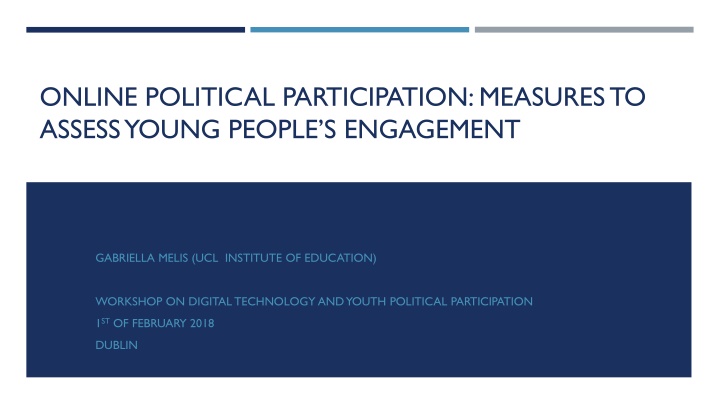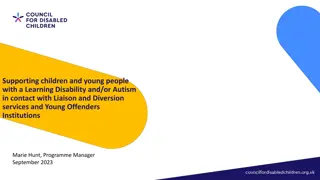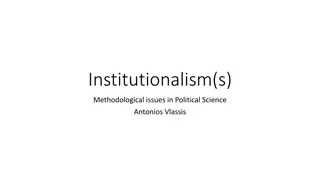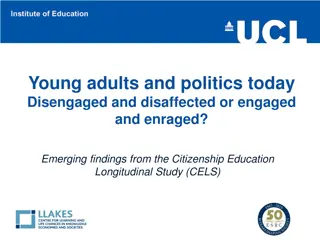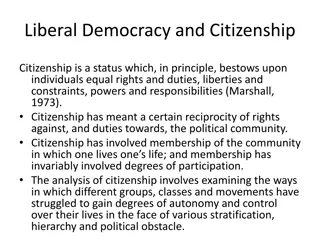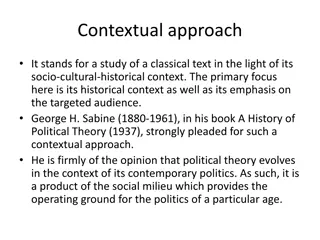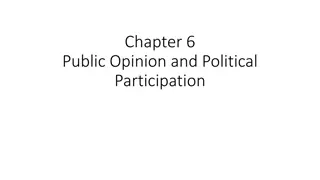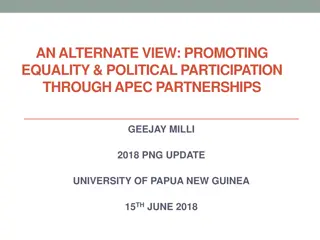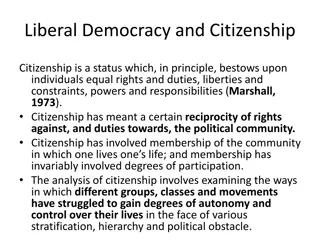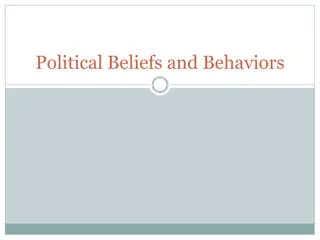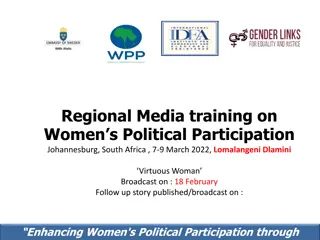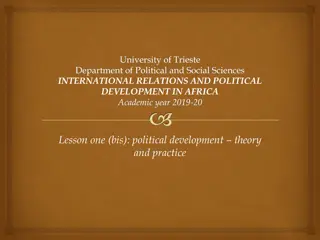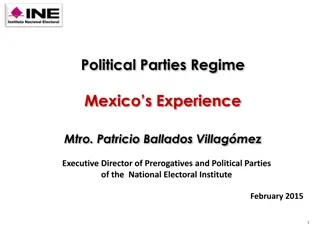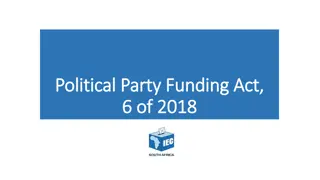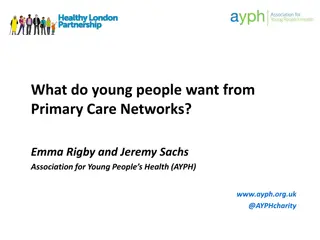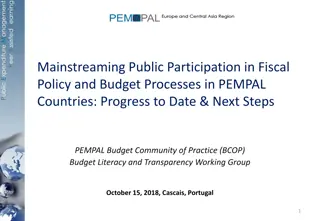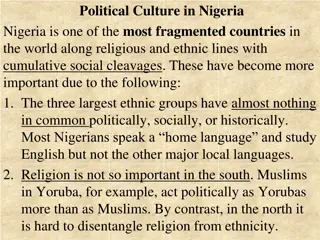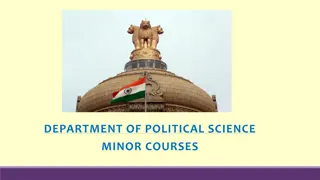Measures to Assess Young People's Online Political Participation
Workshop highlights measures for evaluating young people's engagement in online political activities, including definitions, typologies, and forms of engagement. The study discusses differences within age groups, prevalence of online political expression, and the use of social media for political institutions. It explores various activities like posting links, joining groups, encouraging action, and raising awareness through online platforms.
Download Presentation

Please find below an Image/Link to download the presentation.
The content on the website is provided AS IS for your information and personal use only. It may not be sold, licensed, or shared on other websites without obtaining consent from the author.If you encounter any issues during the download, it is possible that the publisher has removed the file from their server.
You are allowed to download the files provided on this website for personal or commercial use, subject to the condition that they are used lawfully. All files are the property of their respective owners.
The content on the website is provided AS IS for your information and personal use only. It may not be sold, licensed, or shared on other websites without obtaining consent from the author.
E N D
Presentation Transcript
ONLINE POLITICAL PARTICIPATION: MEASURES TO ASSESS YOUNG PEOPLE S ENGAGEMENT GABRIELLA MELIS (UCL INSTITUTE OF EDUCATION) WORKSHOP ON DIGITAL TECHNOLOGY AND YOUTH POLITICAL PARTICIPATION 1STOF FEBRUARY 2018 DUBLIN
INTRODUCTION Reference to the study published in the BJPIR in 2017, co-authored with A Keating Definition of online political engagement in our study Typologies of online political engagement in our study Another measures of online political engagement: Gibson and Cantijoch, 2013 Conclusions
ONLINE POLITICAL ENGAGEMENT: DEFINITION Social media and the increased/diversified access to information: who uses it and how? Online political engagement amongst a sample of 22-29 year olds in Britain: differences within this age group (This group in Britain exhibits low levels of turnout for elections, versus high engagement in social media) Non-institutional, or expressive forms of engagement: protests, petitions, boycotts, campaigns VS. institutional forms: voting, joining a party. Is online politics new or an extension of the real world? Prevalence of routine types of political engagement on social media: some forms of online engagement are more common VS the content-creator-type figure
ONLINE POLITICAL ENGAGEMENT: DEFINITION Use of social networking sites (SNS) to: 1. Intentionally engage with political institutions (more resource-intensive, less frequent). Online institution- oriented engagement (Y/N) 2. Spontaneously engage with more diffuse, routine activities ( less resource-intensive, more diffuse). Online political expression (How often) Item wording Item label Item wording Item label Post links to political stories or articles for others to read Post political links Join or follow a group that is interested in political issues Follow political group Post your own thoughts or comments on political or social causes or issues Post comments Join or follow a group that is campaigning about an issue that is important to you Follow campaigning group Encourage other people to take action on a political or social cause or issue that is important to you Encourage action 'Follow' or 'Like' a politician or candidate Follow politician Encourage other people to vote Encourage voting 'Like' or repost material related to political or social causes or issues that others have posted Like/ Repost links Encourage other people to volunteer Encourage volunteering Raise awareness about an e-petition Promote e-petition Start a campaign about an issue that is important to you Start campaign Raise awareness about a boycott that you are involved in Promote boycott
TYPOLOGIES OF ONLINE POLITICAL ENGAGEMENT Estimated probabilities of engaging in online institution- oriented activities comparing Non-Engagers (Class 1) and Engagers (Class 2) Estimated probabilities of engaging in online political expression - comparing High Engagers (Class 1), Responders (Class 2) and Non-Engagers (Class 3) 1.0 1.00 0.9 0.90 0.8 0.80 0.7 0.70 0.6 0.5 0.60 0.4 0.50 0.3 0.40 0.2 0.1 0.30 0.0 0.20 0.10 0.00 Like' material Post Encourage action E-petition Post stories Boycott comments Class 1 Highly Engaged Class 3 Low/Non-engagers Class 2 Responders Class 1: Non-engagers Class 2: Engagers
OTHER DEFINITIONS: GIBSON AND CANTIJOCH, 2013 E-participation is a multidimensional phenomenon and can be disaggregated into distinctive clusters or subtypes of activity (p. 785) 13 e-political activities, nine campaign specific (2010 GE, UK, n=1960)
CONCLUSIONS Systematisation of quantitative indicators of online political participation to foster comparability not only across studies, but also mostly over time Need to take into account both type of online political engagement as well as frequency patterns Confirmatory factor analysis models are key to identify the structure of multi-item and multi-dimensional constructs, however I would suggest to move forward and look at typologies of (online) political behaviour, i.e. through latent class analysis. Political participation patterns change over time, and unlikely so in a linear way
